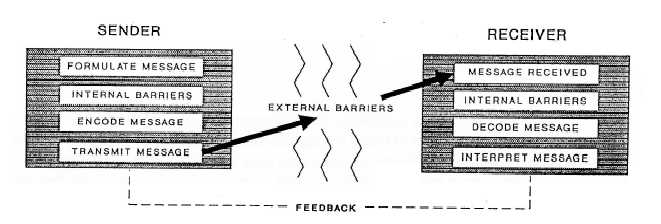| |
THE COMMUNICATION PROCESS
The communication process consists of a message being sent and received. The message may
be verbal or non-verbal. The same basic principles apply whether humans, animals, other forms
of life, or combinations of these are involved. Your challenge, as an instructor, is to not merely
communicate with your students--but to communicate effectively.
Effective communication involves a message being sent and received. Added to this however,
is the element of feedback to ensure that the message sent was received exactly as intended. This
concept may be illustrated using the three-step communications model (fig. 5-1).
Figure 5-1.—Three-step communication process.
Sending The Message
There are four elements involved in sending a message. First, as the instructor (sender), you
formulate the message you intend to communicate. Next, you consider possible barriers that
may affect the message. This includes your experience, the terms you will use, and even your
feeling toward the subject or the students.
External barriers such as noise must also be
considered. Third, you encode the message; that is, you put the message into the words you
want to use. Last, you clearly communicate (send) the message.
Receiving The Message
There are also four elements involved in receiving a message. The students (receivers) will
first hear and/or see the message you sent. Second, the message is affected by external barriers,
if any, and the students’ own internal barriers. Possible internal barriers may include the
students experience level, their understanding of the terms used, their attitude toward the
material, or the way they feel about you. Third, your students decode the message through the
use of mental images. For instance, when you say the word circus, the receiver does not “see”
the letters that form the word. Instead, a mental image of some sort appears. How many
different mental images might arise among your students for this one word alone? A clown, a
34
|

